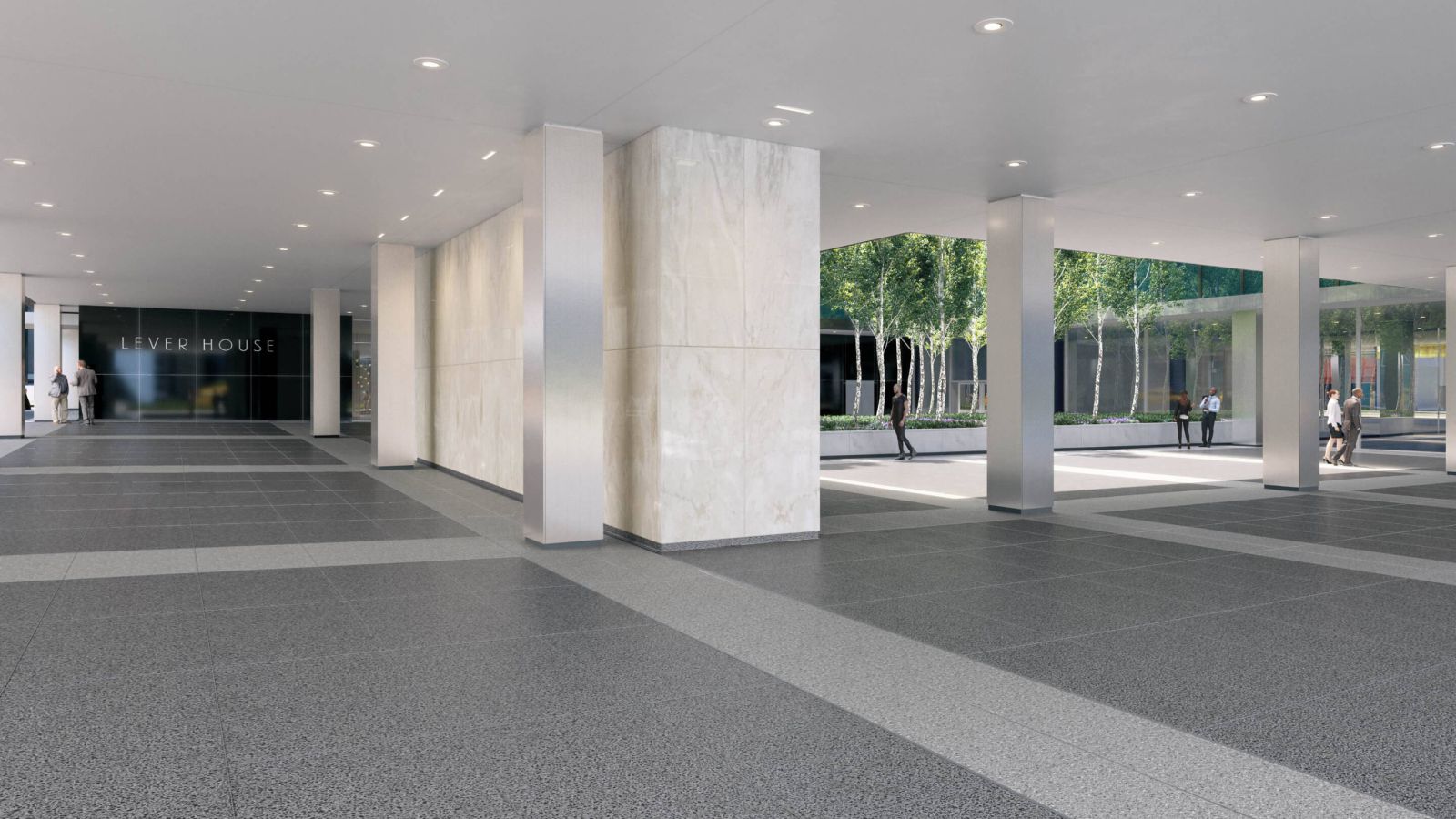Commercial office design was forever changed across America with Lever House’s completion in 1952. Rather than maximizing rentable floor area, SOM placed the office floors – arranged in a 22-story, vertical slab – atop an elevated, horizontal base and set perpendicular to Park Avenue on the northern part of the site. This design brought light and air down to the open plaza below, establishing a new relationship between the office and the public realm.
From a distance, the tower looks just as it did when it opened. SOM revisited the building in 2001 to completely restore its facade. The curtainwall had been so far ahead of its time when constructed that its mullions had corroded, causing adjacent glass panes to crack and necessitating a new, high-performance facade with materials that were identical in appearance to the original, midcentury metal and glass. Now, after nearly 70 years of operation, some of the building’s other original elements are showing their age and need restoration.

Many materials and elements at the ground floor and third level terrace are damaged or deteriorating, while inside the tower, mechanical systems that are original to the building are long past their design life. Today – two decades after the facade work – SOM is returning to this modernist icon to complete its restoration. Such stewardship of a single building, by one firm over a seven-decade period, is a rarity in the architectural profession. SOM is restoring the primary public and private spaces to their original glory, and providing key infrastructural upgrades that will significantly improve the building’s energy performance.
This renovation and restoration will revitalize Lever House, now largely empty, and make it once again Park Avenue’s premier boutique office building. In the plaza, the existing nonoriginal paving is in poor condition and will be fully replaced by a durable, cast-in-place concrete matching the design of Lever House’s original paving: a series of dark gray surfaces separated by a grid of light gray stripes, which follow the rhythm of the building’s stainless steel columns. The water-damaged plaster ceiling, which carries from the outdoor plaza into the lobby, will be replaced in kind with new, higher performing plaster.


Throughout the site, the original stainless steel-clad columns – which have been damaged over time – will be restored and refinished. The long black limestone wall – which acts as a backdrop to both the plaza and lobby – will be re-honed, polished, and cleaned. The white marble, which encloses stair towers within both the plaza and the lobby, will be reset, honed, and repaired. Inside, the lobby’s original terrazzo flooring will likewise be repaired and refinished. Together with the new exterior paving, this will create a renewed sense of continuity from the outdoor space as tenants and visitors transition to the interior.
All around the lobby, SOM is implementing a plethora of updates. Within the lobby’s enclosure, stainless steel mullions will be refurbished and cracked glass will be replaced. A glass mosaic tile wall in the elevator vestibule will be cleaned and repaired, while the luminous ceiling above will feature an upgraded, diffused lighting system to improve brightness and energy efficiency. The cumulative effect of all these efforts, while subtle, will transform the arrival experience at the building and create a place that is both renewed and reminiscent of the landmark’s appearance in 1952.


Moving to the office floors inside, a series of sweeping changes to the mechanical systems will contribute to new LEED Gold and WELL Platinum certification targets. Right now, Lever House is still using its original induction units, a 70-year-old system. SOM is taking out all these units, which will add floor space along the walls and allow ceiling heights to rise from nine to 10 feet without affecting the appearance of the curtain wall from outside.
To replace the old induction units, SOM will equip the building with a modern, dedicated outdoor air system, new chillers, HEPA filters, and an automated building management system. This new mechanical equipment, along with a 500-kilowatt generator, improved security systems, and modernized elevators, will maintain the landmark’s place as a Class A office space for decades to come. When complete in 2023, Lever House’s renovation and restoration will become a primary example of the potential of improving our existing buildings. Source and images Courtesy of SOM.

